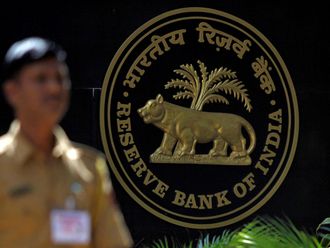When it comes to trying to discern an imminent turning point in collective sentiment in financial markets, most eyes are on stocks, which, after all, to some degree involve ordinary citizens hoping to generate some better rewards with their savings.
In the Gulf and the subcontinent, there is also a fair amount of attention to the prospects for gold, considered somewhat more a mainstream investment than it is by the average international portfolio manager. Gold’s vulnerability to the potential for rising interest rates was discussed here recently.
Only a week or so ago we saw a clear, initial sign of across-the-board nervousness among global assets, which many have quite reasonably taken to be an omen of volatility and price reversals ahead, without much protective shelter from diversification, beyond building cash balances.
Since then the willingness of a considerable portion of investors to lend credence to world economic recovery per se, as the basis for continued confidence, for a while kept the show of buoyancy relatively on the road. Opinion appears genuinely divided, so that not everyone is shrinking to the sidelines in time for a bolt for the exit.
Still, analytically, it is probably the bond market rather than equities that we should follow most closely for clues to the financial and economic twists and turns ahead.
After all, the prime activity of the all-conquering US Federal Reserve that sits at the heart of these issues has been directly to support the fixed-income instruments that are US Treasuries, a process that is being steadily unwound now.
The switch by investors into riskier assets, under which stocks are classified, has actually been a secondary effect, albeit deliberate, of the primary intervention of purchasing government debt on a massive scale.
Bonds and stocks don’t necessarily always move together, of course. In fact, in circumstances where quickening economic growth translates into incipient inflation, bonds may well fall (given their nominal coupon returns) while stocks have reason to rise with business activity.
In another, fairly familiar scenario, stocks and bonds may find common cause in the shared factor of currency denomination. Thus, an improving US dollar — perhaps favoured because economic growth will both drive healthier corporate earnings and budgetary consolidation — can easily benefit and partake in a generalised market upsurge. This breach of the risk-off/risk-on paradigm since the global financial crisis has in fact been visible recently.
Yet, in the current, perhaps fragile, environment it is easy to imagine that the clearest concern is of tighter monetary conditions, belatedly taking the heat out of the Fed’s rigging of asset markets.
Gulf bonds, meanwhile, do not depend on artificial support in the way that international benchmarks have, having instead benefited from ample regional liquidity. Indeed, they have fared well this year both for domestic reasons and because of the complementary influence of helpful trends in foreign markets (see box).
The question now is whether this comfortable outlook can persist, if the overseas market downturn that was expected much earlier this year finally materializes. The latest weekly research note from Bank Audi observed regional bonds “tracking” declines in Treasuries.
Whether any amount of the Gulf’s self-insulation in this respect can be sustained may depend on the relative severity of any fallout in the US market — whose underlying movements at the moment are anyway being heavily disguised by the intermittent, risk-off impetus of intensifying geopolitical concerns.
Readers and investors alike, however, may notice the increasing comment as to whether markets are close to topping out — and try to position themselves accordingly.












